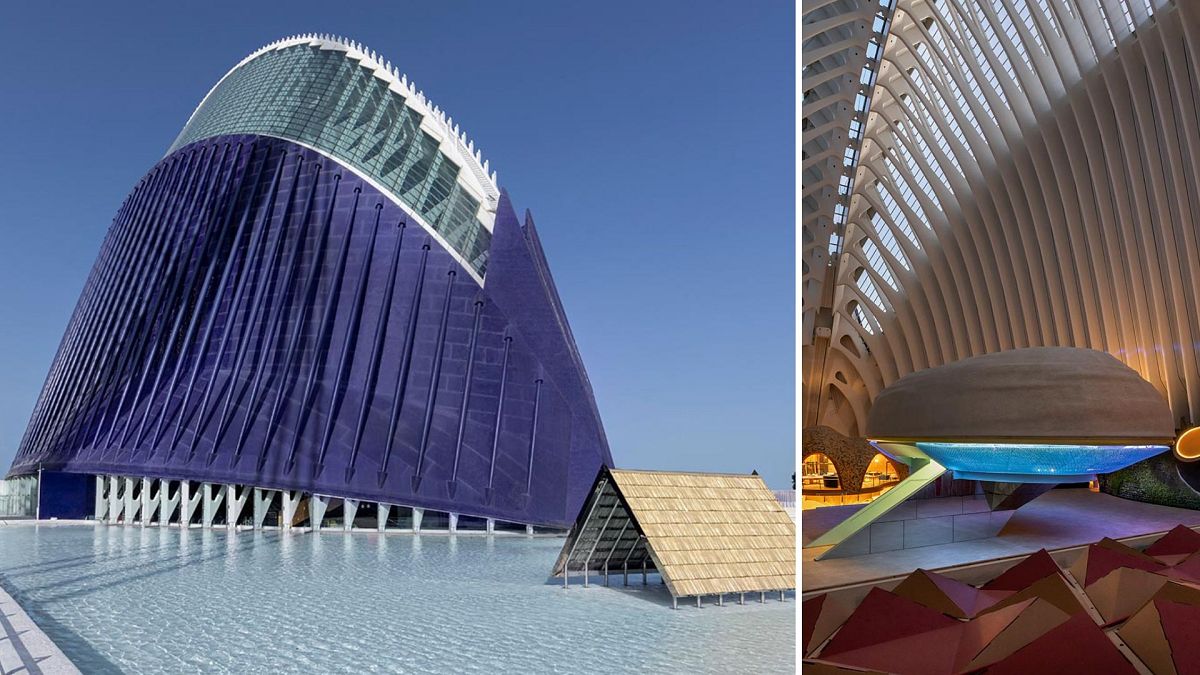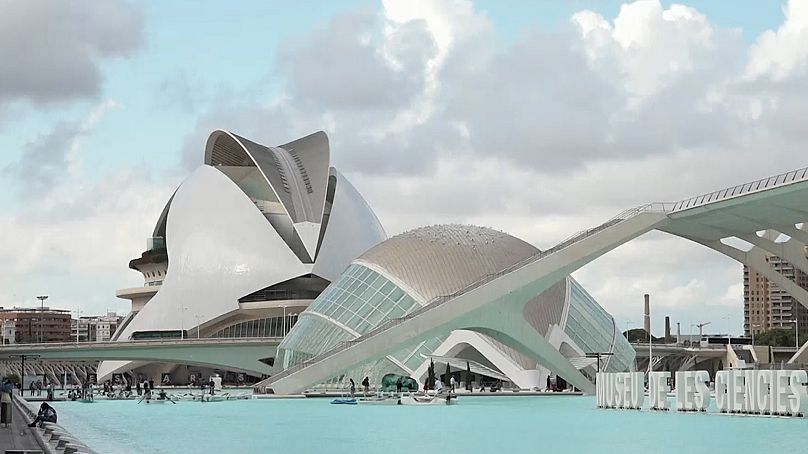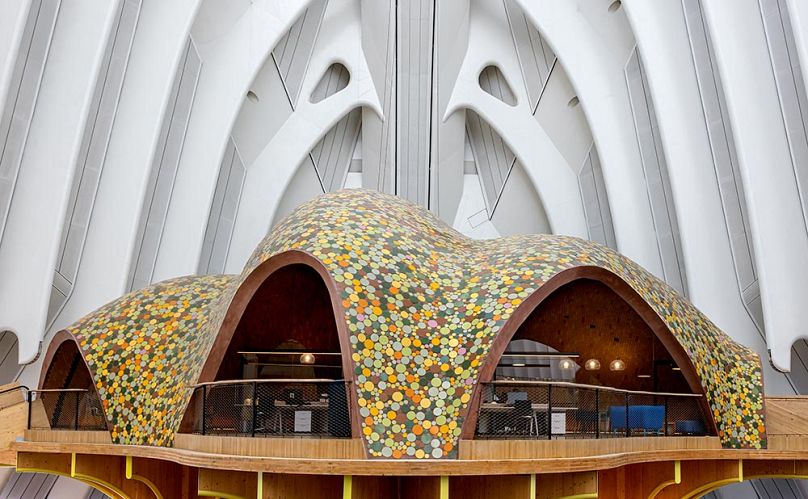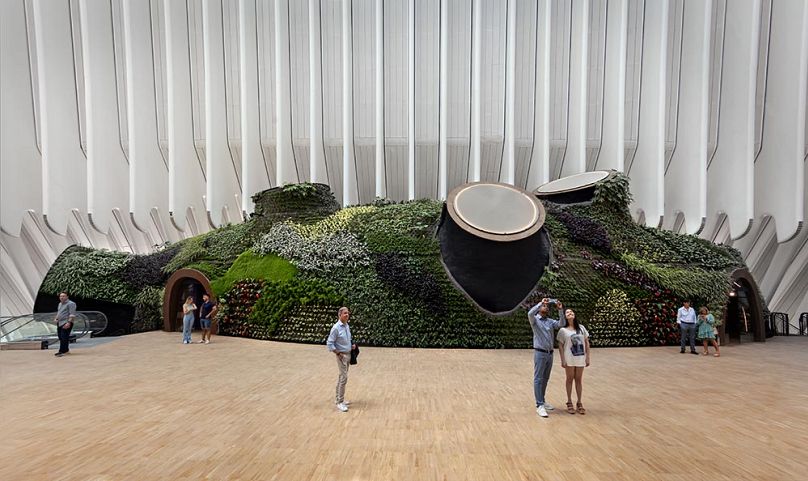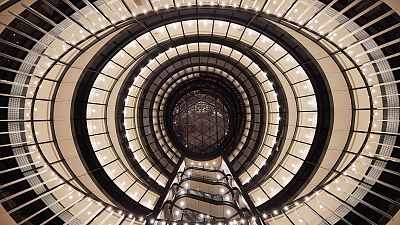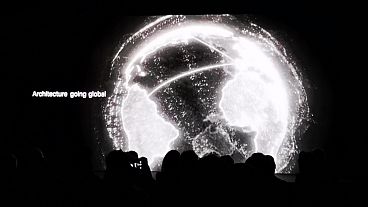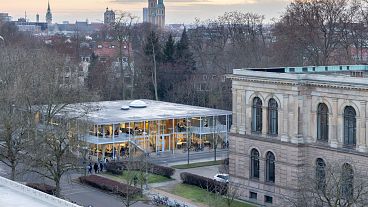Take a look inside Valencia's recently inaugurated CaixaForum, the latest and most striking addition to the network of cultural centres run by ”la Caixa” Foundation in Spain
Tourists from around the world are flocking to the Spanish city of Valencia, following the opening of the CaixaForum, a new art and exhibition centre within Valencia's City of the Arts and Science architectural complex.
The Ciutat de les Arts i les Ciencies complex (Catalan for City of the Arts and Science) was first started in 1996 with the intention of being a symbol of Valencia's commitment to cultural tourism and modern architecture.
The design of the project gave local architect Santiago Calatrava worldwide fame, making him among the top ten architects in the world today, alongside such names as Normal Foster, Renzo Piano and Cesar Pelli.
What can be found in Valencia's City of the Arts and Science?
The complex consists of six buildings which aim to bring culture both for tourists and locals, encouraging people to submerge themselves into a unique urban experience.
The Hemisferic, known as "The Eye of Wisdom," was the first building to be completed in 1998. It represents a human eye open to the world, housing an IMAX cinema and planetarium.
Standing by its side is the Queen Sofia opera house, an arts centre opened in 2005. At 70 metres high, the music centre has positioned Valencia on the international arts circuit, especially when it comes to opera and theatre performances.
The science museum, opened in 2000, is the biggest structure of the whole complex, with a large pond outside where people can paddle board.
Visitors can also enjoy the botanic garden, known as L'Umbracle, housing hundreds of native species of plants that change shape and colour with every season.
The aquarium at the end of the complex, known as L'Oceanografic, is thought to be the largest marine centre in Europe.
Valeri Zelixon, an Israeli tourist, says when it comes to modern architecture, Spain is a top destination: "This is not our first venture into this kind of modern architecture. We've been to Bilbao, for example, something different. We've been to Barcelona, something different. This is something unique for Valencia. So, we decided to come and explore. This is wonderful."
Jeffrey Wang, a tourist from the US, is in awe of the blend of old and new created by these sculptures: "It is just amazing and unique. Coming here I haven't seen anything really like it. I don't know how to describe it. It's just beautiful."
The architecture of the L'Agora building
Up until recently, the reputation of the City of the Arts and Science was marred by failed attempts to make its tallest and one of its most distinctive buildings functional - the L'Agora building.
Finished in 2009, it was inaugurated as the location of ATP Valencia Open 500 tennis tournament, which was held annually until 2015. But it had remained empty ever since.
The 80-metre-tall metallic structure, resembling a pointed ellipsis, was conceived as a covered public square to serve as a place of social gathering, like in ancient Greek city.
The structure is a large arena featuring a tall glass roof along its spine and a movable structure to control the overhead natural light.
The tall white structure, resembling a rib cage of a big cetacean, gives the building an organic shape from the inside, but abstract and geometric on the outside.
Creating the CaixaForum
In 2018, the CaixaForum foundation, a cultural foundation from a large Spanish bank with multi-purpose exhibition centres in several Spanish cities (including Barcelona, Seville and Madrid), held an architecture competition to build a new CaixaForum within Valencia's L'Agora.
Catalan architect Enric Ruiz-Geli was the winner with his project of creating a multi-purpose space housing two exhibition halls and an auditorium with 300 seats, among other facilities.
Construction started in 2018, and the brand new CaixaForum housed inside L'Agora was opened on 22 June 2022.
"I think this was like a hermit crab, standing beside the aquarium. An abandoned conch. Beautiful and blue, but empty. And CaixaForum is now the crab that inhabits it, to make it look full of life," explains Alvaro Borrás, the president of CaixaForum Valencia.
"So, now we can circulate throughout the whole complex enjoying a cultural experience. And it's also a good way of getting rid of the negative feelings around this building which had remained empty for so long," he adds.
Alvaro Borrás explains the challenges that Ruiz-Geli faced creating something new and unique that would blend with the existing building by Calatrava.
"I don't think they talked to each other. But you have the sensation that (Santiago) Calatrava and (Enric) Ruiz Geli have reached an agreement on how to deal with a project of these dimensions," he says.
"There is a dialogue between Calatrava's building, which remained unoccupied during more than a decade and Ruiz Geli's building, recently inaugurated. I think this dialogue is real. And it was the will of Ruiz Geli. To maintain Calatrava's intention behind the building. To serve as an agora, a space of people coming together."
The space is made from environmentally friendly and sustainable elements, including cork, wood, glass fibre and cardboard.
It's currently hosting an exhibition by the British Museum about the world of ancient Egypt's pharaohs.
Bjorn Graffmann, a tourist from Germany, says the exterior of L'Agora and the newly built interior constitutes an example of success between two different modern architectural trends.
"It's wonderful. I haven't seen anything like this. So many of them. The L'Oceanic (aquarium), this one and the others I haven't seen yet. I may have to be back tomorrow, because time flies. All architecture lovers should come here and see this," he says.
Interest in the new space is proving high, with an average 3,500 daily visitors, some 380,000 since doors opened in June.
Check out the video above to see inside the spectacular CaixaForum.
